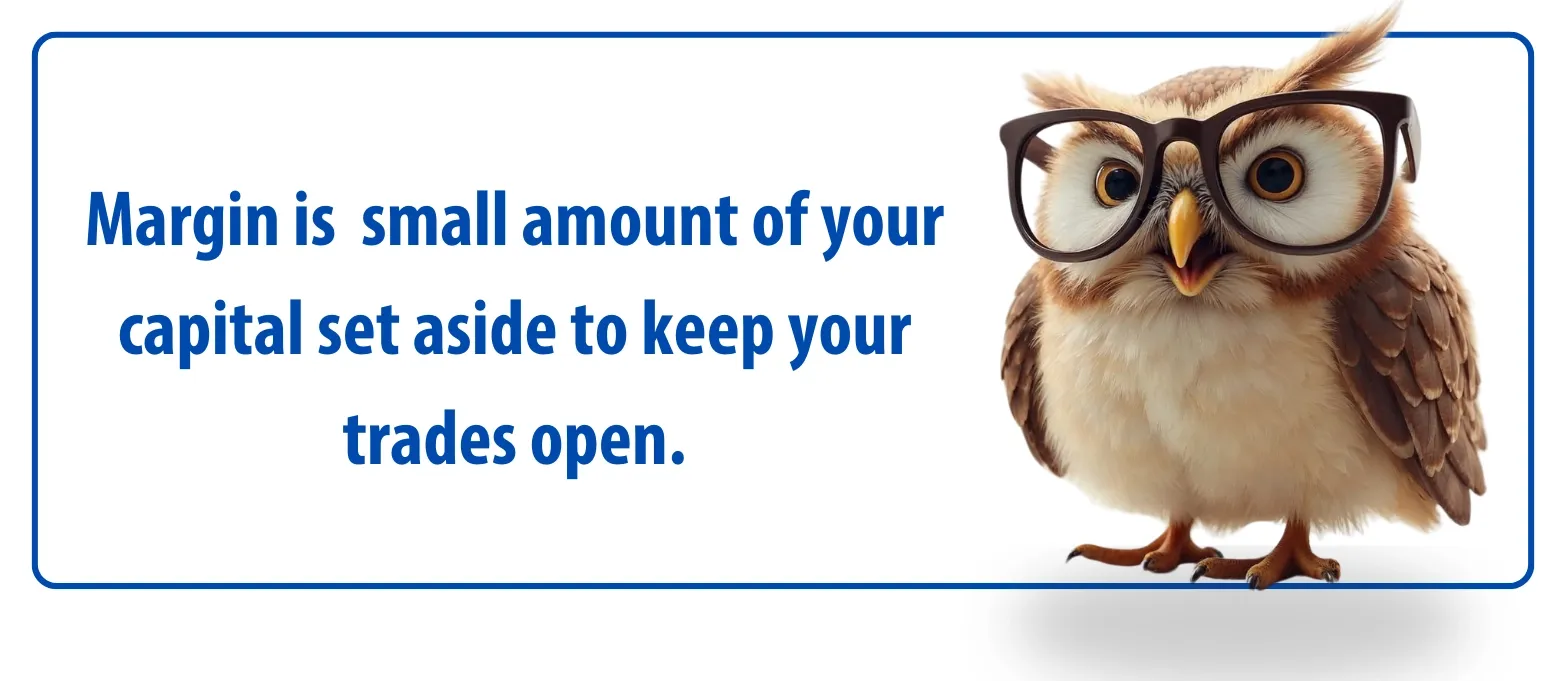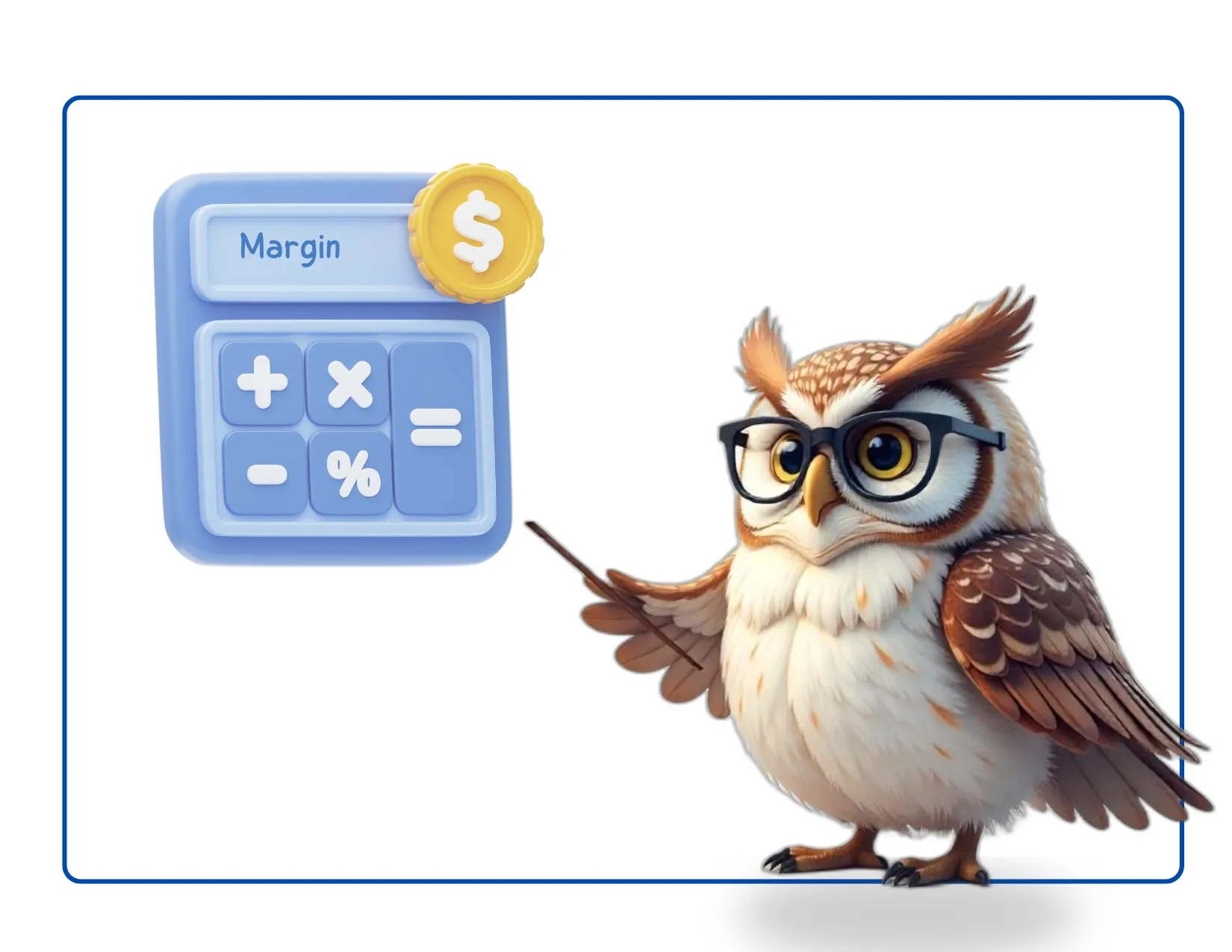What is the forex margin

What is a forex margin? And why must traders know about it? Forex trading, a popular financial activity, attracts investors worldwide due to its potential for high returns. However, one critical concept that every trader must understand is "margin." This essay delves into what forex margin is, its implications in trading, how margin trading works, and the requirements for margin methods to calculate margin in forex, and also talks about some margin trading examples.
What Does Margin Mean in Forex?
In the context of forex trading, margin meaning is the amount of capital that a trader must have to open and maintain a position in the market. It acts as a security deposit, allowing traders to leverage their positions. Leverage, in return, enables traders to control a more substantial amount of money than their initial investment would typically allow.
A percentage of the entire position size is used to represent the margin. For example, if a trader wants to control a position worth $100,000 and the required margin based on the chosen leverage is 1%, they would need to have $1,000 in their account. This concept is crucial for forex trading, as it allows for greater potential profits, but it also comes with increased risk.
Margin Meaning
The term "margin" can have different meanings depending on the context. Generally, in finance, it refers to the difference between the cost of a product and its selling price. But in the context of forex, it particularly refers to the capital needed to initiate and sustain trading positions. For traders to effectively manage risk and make wise judgments, they must have a solid understanding of margin.

How Does Margin Trading in the Forex Market Work?
Margin trading in the forex market operates on the principle of leverage. When a trader uses margin, they borrow funds from their broker to increase their trading capacity. It means that for a relatively small amount of capital, a trader can control a much larger position.
The Process of Margin Trading
-
Opening an Account: To begin trading on margin, a trader must start by opening a margin account with a forex broker. This account allows for leveraged trading.
-
Initial Margin Requirement: When opening an account, brokers require an initial margin deposit.
-
Leverage: Brokers offer different levels of leverage. For example, a leverage ratio of 1:100 allows a trader to control $100,000 in the market with just $1,000 in their Balance. While leverage can amplify profits, it also magnifies losses.
-
Margin Call: The broker may issue a margin call if market changes cause a trader's account equity to drop below the necessary margin level. It indicates that the trader runs the risk of having their position closed unless they make extra deposits to keep it open.
-
Closing Positions: Once a position reaches a desired profit or loss threshold, the trader can close it. The margin used for the position is then released back to the trader’s account.
Example of Margin Trading
In this section, we will continue with a margin trading example for better understanding. Consider a trader who has $1,000 in their trading account and uses a leverage ratio of 1:100. This allows the trader to control a position worth $100,000. If the trader enters a long position with the highest possible volume (if he is trading USD/CAD, then he can open 1 standard lot) on a currency pair and the market moves in their favor by 100 pips, they would realize a profit of $1,000, effectively doubling their account balance. Although if the market moves against them by the same percentage, they would incur a loss equal to their entire investment, highlighting the inherent risks of margin trading. Calculate margin accurately with Mishov Markets Margin Calculator.
What is the Required Margin in Trading?
The required margin is the amount of funds a trader must have in their account to open and maintain a position. This requirement varies depending on the broker, the size of the trade, the trading symbol contract size and the leverage ratio. Understanding the required margin is vital for effective risk management in forex trading. Make sure to get these details from your broker before jumping into trading.
Factors Affecting Required Margin
-
Position Size: The larger the position, the higher the required margin. For instance, a position size of $100,000 with a margin requirement of 1% would require $1,000 in margin.
-
Leverage Ratio: The level of leverage offered by the broker significantly affects the required margin. Higher leverage allows for smaller margin requirements.
-
Currency Pair Price: Different currency pairs exhibit varying levels of volatility and price, which can influence the required margin. Pairs with a higher price for their contract size may necessitate higher margin requirements to mitigate risk.
-
Broker Policies: Each broker has its own policies regarding margin requirements. Traders should familiarize themselves with these policies to avoid unexpected margin calls.
How to Calculate Margin in Forex
Calculating margin in forex trading is straightforward, and it can help traders assess their risk exposure and make informed decisions. Mishov Markets provides you with the best margin calculator there is, for your convenience.

Margin Calculation Formula
The formula to calculate the required margin is as follows:
Required Margin = Trade Size/Leverage
Where:
-
Trade Size is the total value of the position (e.g., the value of the currency pair being traded).
-
Leverage is the ratio provided by the broker.
Example of Margin Calculation
Here are some margin trading examples: Let’s consider a trader who wants to buy 1 standard lot (100,000 units) of EUR/USD with a leverage ratio of 100:1.
-
Determine Trade Size: The trade size is 1 lot = 100,000 units. If the current exchange rate for EUR/USD is 1.1200, the total value of the position would be:
Trade Size=100,000×1.1200=112,000 USD -
Calculate Required Margin: Using the formula: trade size / leverage =
Required Margin=112,000/100 : $1,120
In this example, the trader would need to maintain $1,120 as a margin to open this position.
Forex Margin Calculator
To simplify the process of calculating margin, many brokers offer forex margin calculators on their platforms. These tools allow traders to quickly input trade size and leverage to determine the required margin, enhancing their trading efficiency.
What is a forex margin? As we discussed in this essay, understanding forex margin meaning and forex margin calculator is essential for successful trading in the foreign exchange market. It provides traders with the ability to leverage their investments, amplifying both potential profits and risks. By grasping the concept of required margin and how to calculate it, traders can make informed decisions and manage their risk more effectively. As with any investment, it is crucial to approach margin trading with a solid understanding and a well-thought-out strategy. Whether you are a beginner or an experienced trader, mastery of margin concepts will equip you to navigate the complexities of the forex market. Mishov Markets offers a user-friendly platform with comprehensive resources and tools to enhance your trading experience. Their commitment to customer support ensures you have the guidance you need every step of the way.








